Sweta Bhattacharya
A Comprehensive Analysis of Blockchain Applications for Securing Computer Vision Systems
Jul 13, 2023Abstract:Blockchain (BC) and Computer Vision (CV) are the two emerging fields with the potential to transform various sectors.The ability of BC can help in offering decentralized and secure data storage, while CV allows machines to learn and understand visual data. This integration of the two technologies holds massive promise for developing innovative applications that can provide solutions to the challenges in various sectors such as supply chain management, healthcare, smart cities, and defense. This review explores a comprehensive analysis of the integration of BC and CV by examining their combination and potential applications. It also provides a detailed analysis of the fundamental concepts of both technologies, highlighting their strengths and limitations. This paper also explores current research efforts that make use of the benefits offered by this combination. The effort includes how BC can be used as an added layer of security in CV systems and also ensure data integrity, enabling decentralized image and video analytics using BC. The challenges and open issues associated with this integration are also identified, and appropriate potential future directions are also proposed.
A Survey on Federated Learning for the Healthcare Metaverse: Concepts, Applications, Challenges, and Future Directions
Apr 05, 2023



Abstract:Recent technological advancements have considerately improved healthcare systems to provide various intelligent healthcare services and improve the quality of life. Federated learning (FL), a new branch of artificial intelligence (AI), opens opportunities to deal with privacy issues in healthcare systems and exploit data and computing resources available at distributed devices. Additionally, the Metaverse, through integrating emerging technologies, such as AI, cloud edge computing, Internet of Things (IoT), blockchain, and semantic communications, has transformed many vertical domains in general and the healthcare sector in particular. Obviously, FL shows many benefits and provides new opportunities for conventional and Metaverse healthcare, motivating us to provide a survey on the usage of FL for Metaverse healthcare systems. First, we present preliminaries to IoT-based healthcare systems, FL in conventional healthcare, and Metaverse healthcare. The benefits of FL in Metaverse healthcare are then discussed, from improved privacy and scalability, better interoperability, better data management, and extra security to automation and low-latency healthcare services. Subsequently, we discuss several applications pertaining to FL-enabled Metaverse healthcare, including medical diagnosis, patient monitoring, medical education, infectious disease, and drug discovery. Finally, we highlight significant challenges and potential solutions toward the realization of FL in Metaverse healthcare.
Metaverse for Healthcare: A Survey on Potential Applications, Challenges and Future Directions
Sep 09, 2022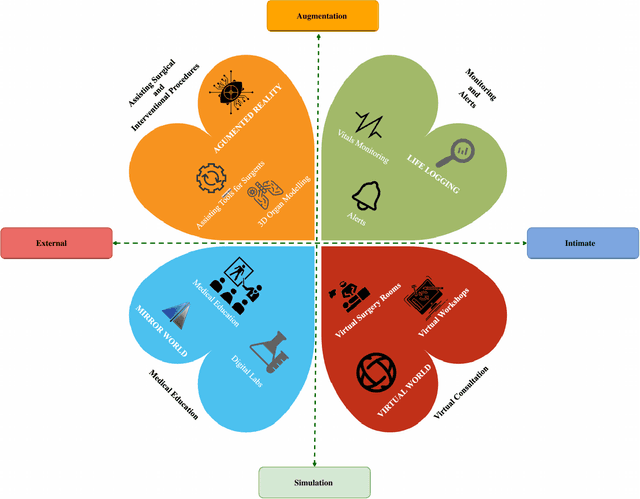

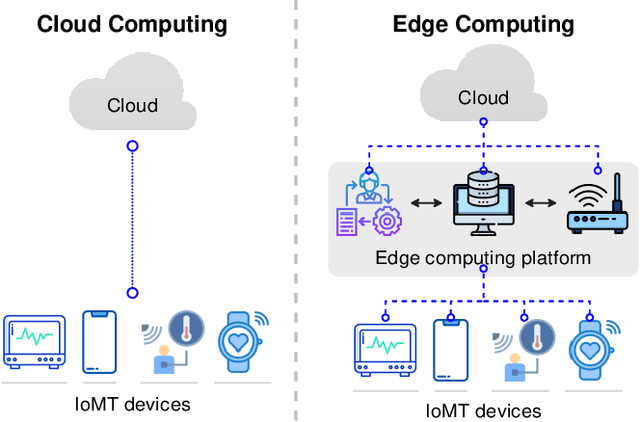
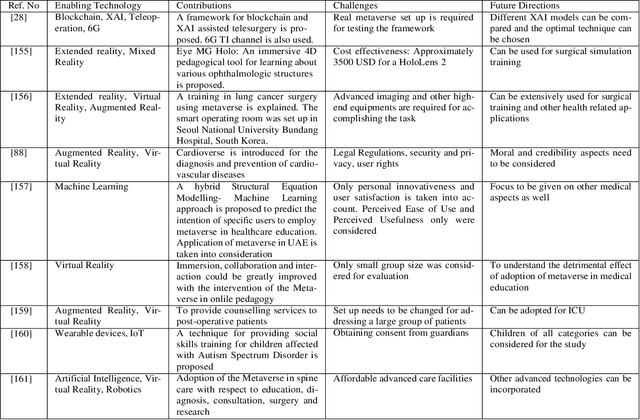
Abstract:The rapid progress in digitalization and automation have led to an accelerated growth in healthcare, generating novel models that are creating new channels for rendering treatment with reduced cost. The Metaverse is an emerging technology in the digital space which has huge potential in healthcare, enabling realistic experiences to the patients as well as the medical practitioners. The Metaverse is a confluence of multiple enabling technologies such as artificial intelligence, virtual reality, augmented reality, internet of medical devices, robotics, quantum computing, etc. through which new directions for providing quality healthcare treatment and services can be explored. The amalgamation of these technologies ensures immersive, intimate and personalized patient care. It also provides adaptive intelligent solutions that eliminates the barriers between healthcare providers and receivers. This article provides a comprehensive review of the Metaverse for healthcare, emphasizing on the state of the art, the enabling technologies for adopting the Metaverse for healthcare, the potential applications and the related projects. The issues in the adaptation of the Metaverse for healthcare applications are also identified and the plausible solutions are highlighted as part of future research directions.
Federated Learning for IoUT: Concepts, Applications, Challenges and Opportunities
Jul 28, 2022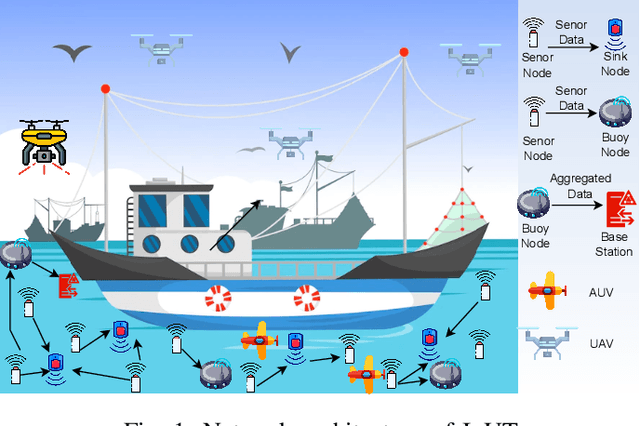
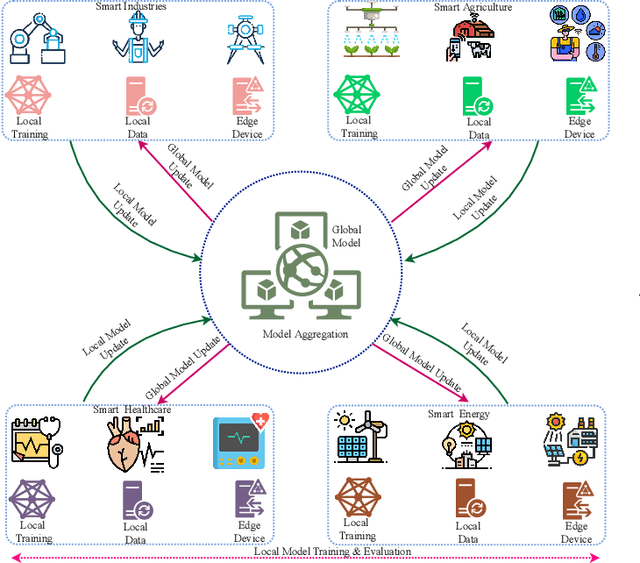
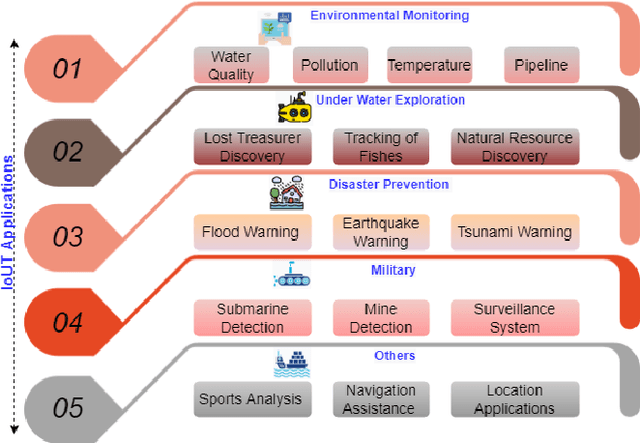

Abstract:Internet of Underwater Things (IoUT) have gained rapid momentum over the past decade with applications spanning from environmental monitoring and exploration, defence applications, etc. The traditional IoUT systems use machine learning (ML) approaches which cater the needs of reliability, efficiency and timeliness. However, an extensive review of the various studies conducted highlight the significance of data privacy and security in IoUT frameworks as a predominant factor in achieving desired outcomes in mission critical applications. Federated learning (FL) is a secured, decentralized framework which is a recent development in machine learning, that will help in fulfilling the challenges faced by conventional ML approaches in IoUT. This paper presents an overview of the various applications of FL in IoUT, its challenges, open issues and indicates direction of future research prospects.
XAI for Cybersecurity: State of the Art, Challenges, Open Issues and Future Directions
Jun 03, 2022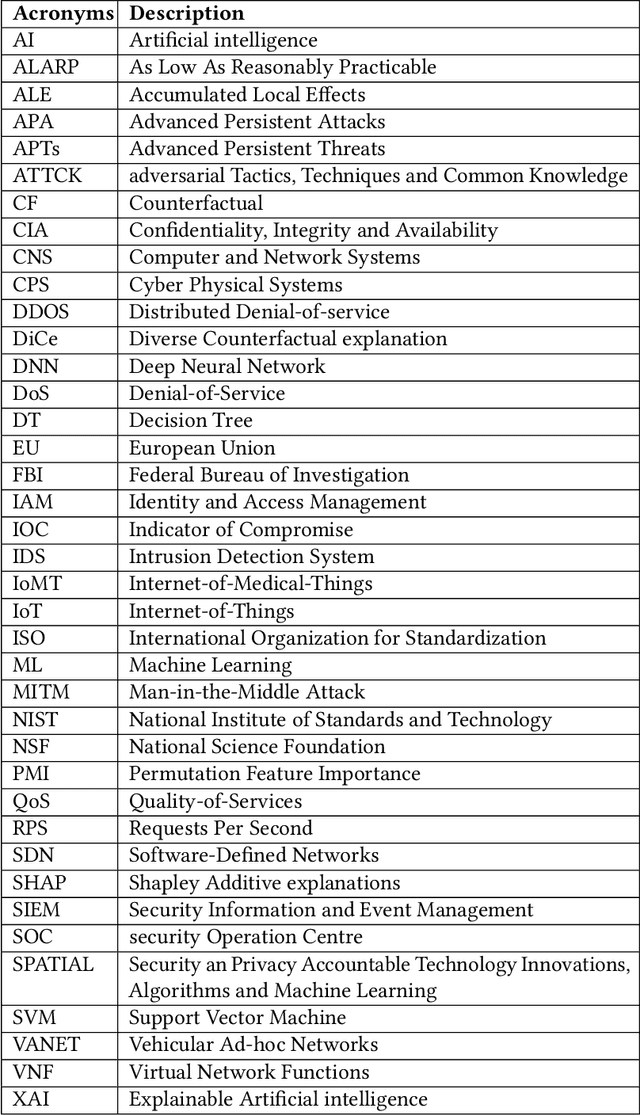
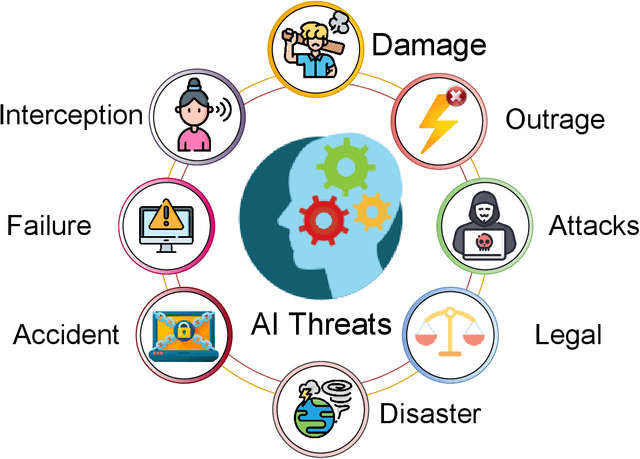
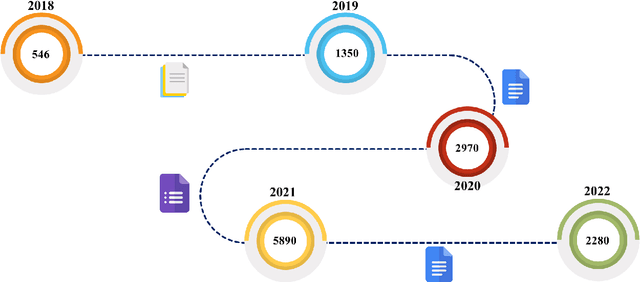
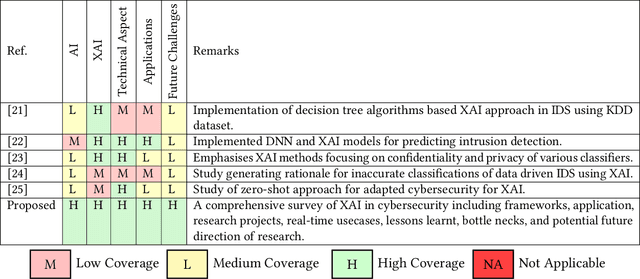
Abstract:In the past few years, artificial intelligence (AI) techniques have been implemented in almost all verticals of human life. However, the results generated from the AI models often lag explainability. AI models often appear as a blackbox wherein developers are unable to explain or trace back the reasoning behind a specific decision. Explainable AI (XAI) is a rapid growing field of research which helps to extract information and also visualize the results generated with an optimum transparency. The present study provides and extensive review of the use of XAI in cybersecurity. Cybersecurity enables protection of systems, networks and programs from different types of attacks. The use of XAI has immense potential in predicting such attacks. The paper provides a brief overview on cybersecurity and the various forms of attack. Then the use of traditional AI techniques and its associated challenges are discussed which opens its doors towards use of XAI in various applications. The XAI implementations of various research projects and industry are also presented. Finally, the lessons learnt from these applications are highlighted which act as a guide for future scope of research.
Federated Learning for Big Data: A Survey on Opportunities, Applications, and Future Directions
Oct 17, 2021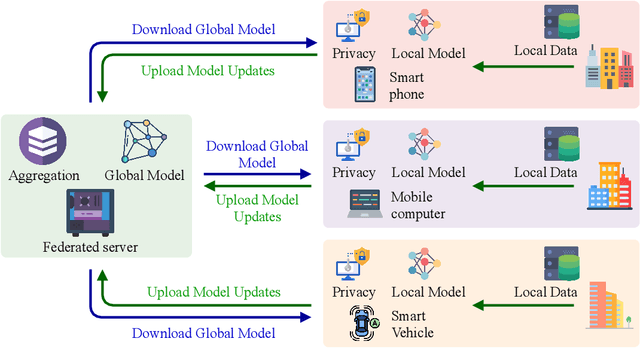
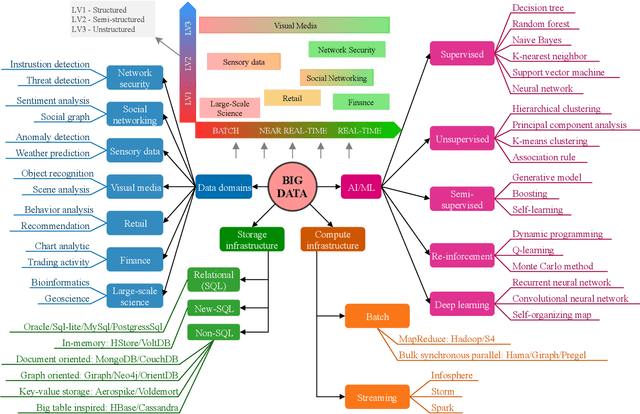

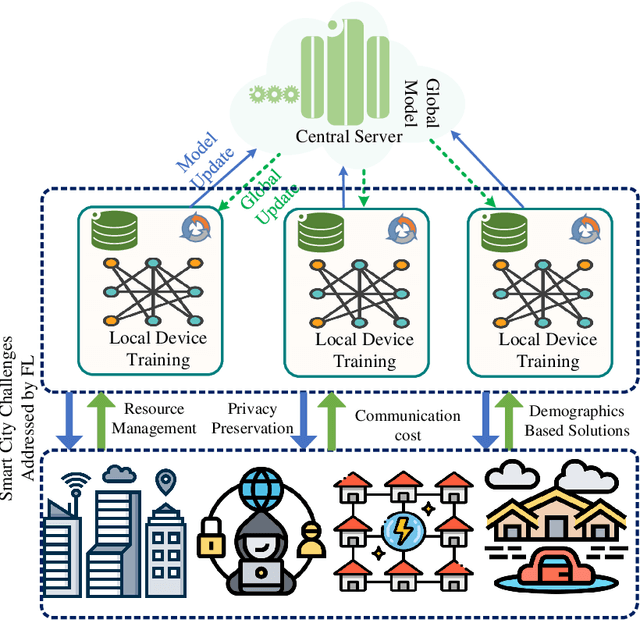
Abstract:Big data has remarkably evolved over the last few years to realize an enormous volume of data generated from newly emerging services and applications and a massive number of Internet-of-Things (IoT) devices. The potential of big data can be realized via analytic and learning techniques, in which the data from various sources is transferred to a central cloud for central storage, processing, and training. However, this conventional approach faces critical issues in terms of data privacy as the data may include sensitive data such as personal information, governments, banking accounts. To overcome this challenge, federated learning (FL) appeared to be a promising learning technique. However, a gap exists in the literature that a comprehensive survey on FL for big data services and applications is yet to be conducted. In this article, we present a survey on the use of FL for big data services and applications, aiming to provide general readers with an overview of FL, big data, and the motivations behind the use of FL for big data. In particular, we extensively review the use of FL for key big data services, including big data acquisition, big data storage, big data analytics, and big data privacy preservation. Subsequently, we review the potential of FL for big data applications, such as smart city, smart healthcare, smart transportation, smart grid, and social media. Further, we summarize a number of important projects on FL-big data and discuss key challenges of this interesting topic along with several promising solutions and directions.
Federated Learning for Intrusion Detection System: Concepts, Challenges and Future Directions
Jun 16, 2021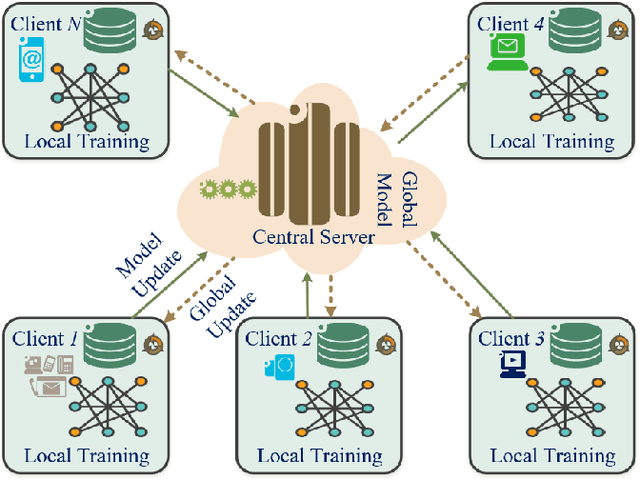
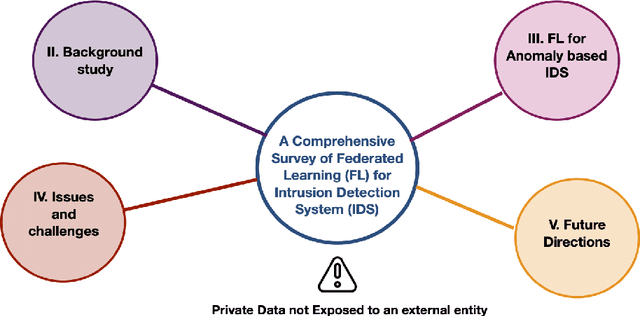

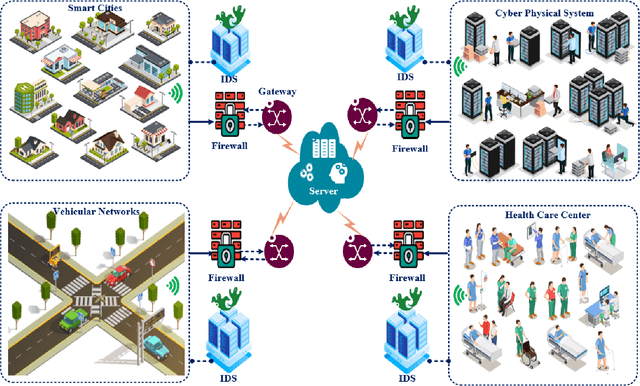
Abstract:The rapid development of the Internet and smart devices trigger surge in network traffic making its infrastructure more complex and heterogeneous. The predominated usage of mobile phones, wearable devices and autonomous vehicles are examples of distributed networks which generate huge amount of data each and every day. The computational power of these devices have also seen steady progression which has created the need to transmit information, store data locally and drive network computations towards edge devices. Intrusion detection systems play a significant role in ensuring security and privacy of such devices. Machine Learning and Deep Learning with Intrusion Detection Systems have gained great momentum due to their achievement of high classification accuracy. However the privacy and security aspects potentially gets jeopardised due to the need of storing and communicating data to centralized server. On the contrary, federated learning (FL) fits in appropriately as a privacy-preserving decentralized learning technique that does not transfer data but trains models locally and transfers the parameters to the centralized server. The present paper aims to present an extensive and exhaustive review on the use of FL in intrusion detection system. In order to establish the need for FL, various types of IDS, relevant ML approaches and its associated issues are discussed. The paper presents detailed overview of the implementation of FL in various aspects of anomaly detection. The allied challenges of FL implementations are also identified which provides idea on the scope of future direction of research. The paper finally presents the plausible solutions associated with the identified challenges in FL based intrusion detection system implementation acting as a baseline for prospective research.
Roughsets-based Approach for Predicting Battery Life in IoT
Feb 09, 2021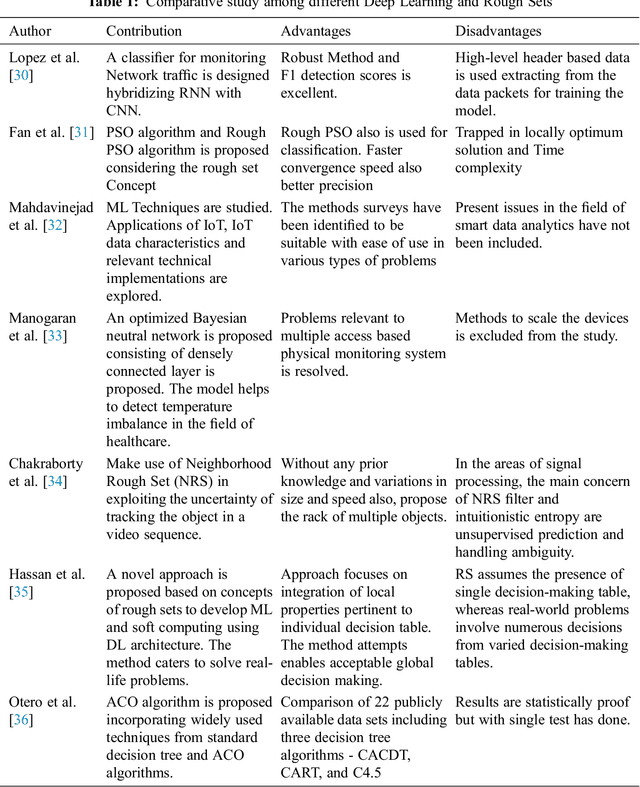
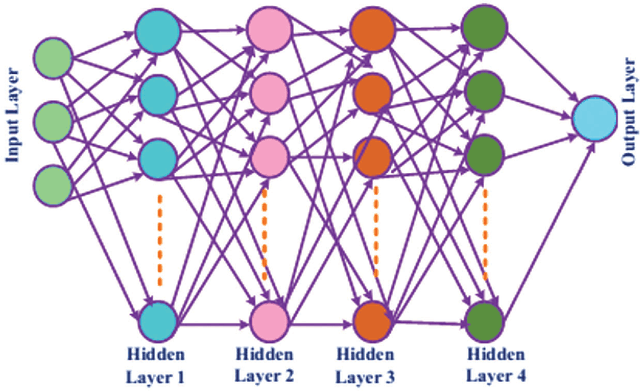
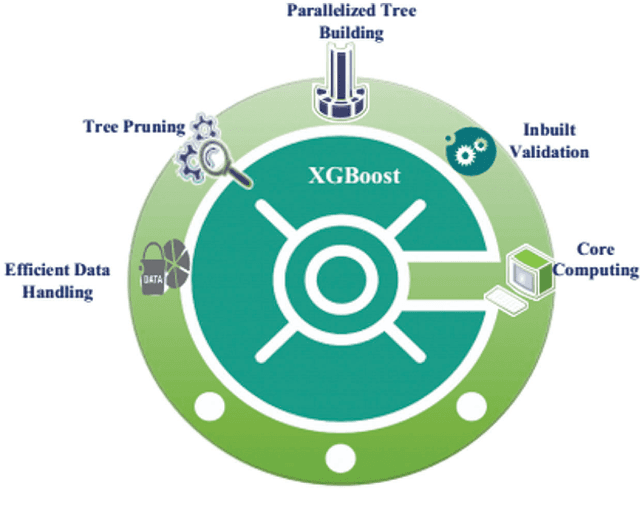
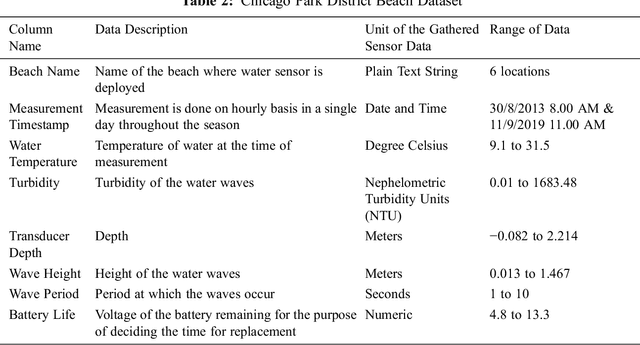
Abstract:Internet of Things (IoT) and related applications have successfully contributed towards enhancing the value of life in this planet. The advanced wireless sensor networks and its revolutionary computational capabilities have enabled various IoT applications become the next frontier, touching almost all domains of life. With this enormous progress, energy optimization has also become a primary concern with the need to attend to green technologies. The present study focuses on the predictions pertinent to the sustainability of battery life in IoT frameworks in the marine environment. The data used is a publicly available dataset collected from the Chicago district beach water. Firstly, the missing values in the data are replaced with the attribute mean. Later, one-hot encoding technique is applied for achieving data homogeneity followed by the standard scalar technique to normalize the data. Then, rough set theory is used for feature extraction, and the resultant data is fed into a Deep Neural Network (DNN) model for the optimized prediction results. The proposed model is then compared with the state of the art machine learning models and the results justify its superiority on the basis of performance metrics such as Mean Squared Error, Mean Absolute Error, Root Mean Squared Error, and Test Variance Score.
Blockchain based Attack Detection on Machine Learning Algorithms for IoT based E-Health Applications
Nov 03, 2020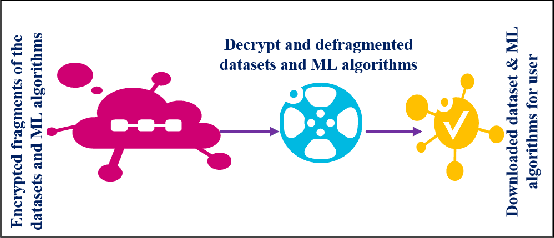

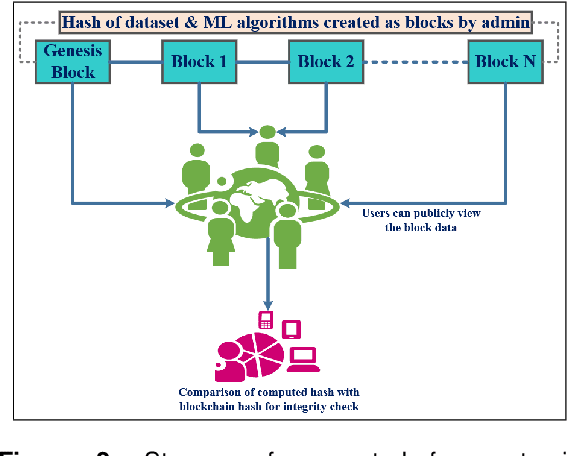
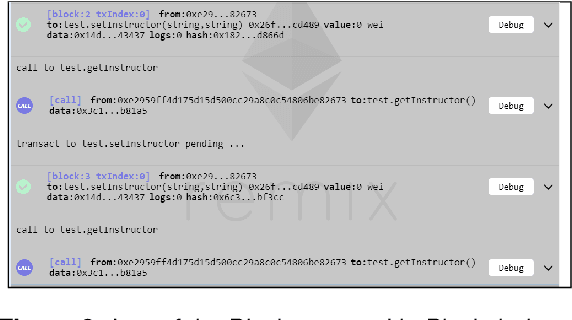
Abstract:The application of machine learning (ML) algorithms are massively scaling-up due to rapid digitization and emergence of new tecnologies like Internet of Things (IoT). In today's digital era, we can find ML algorithms being applied in the areas of healthcare, IoT, engineering, finance and so on. However, all these algorithms need to be trained in order to predict/solve a particular problem. There is high possibility of tampering the training datasets and produce biased results. Hence, in this article, we have proposed blockchain based solution to secure the datasets generated from IoT devices for E-Health applications. The proposed blockchain based solution uses using private cloud to tackle the aforementioned issue. For evaluation, we have developed a system that can be used by dataset owners to secure their data.
 Add to Chrome
Add to Chrome Add to Firefox
Add to Firefox Add to Edge
Add to Edge